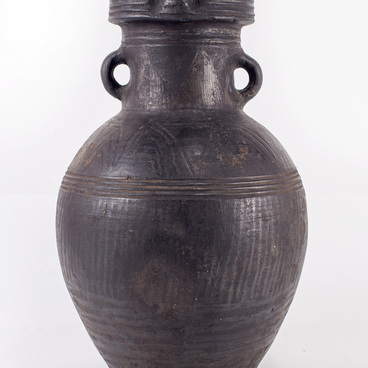The pilot’s seat was made at the Kazan Aviation Plant named after Sergey Gorbunov. Today it is one of the largest enterprises of the aviation industry in Russia. Over the years, the plant has produced over 20,000 aircraft, including modifications of Pe and Tu bombers. One of the leading engineers of the plant in its formative stage was a student of Andrei Tupolev — Vladimir Petlyakov.
Vladimir Mikhailovich Petlyakov was born on June 27, 1891 in the village of Sambek in the present-day Rostov Region. At the age of 20, he graduated from a technical school in Taganrog and went to Moscow, where on the second attempt he entered the mechanical department of the Imperial Higher Technical School. As a thesis, Petlyakov developed a project of a light sport aircraft — ANT, and 10 years later he started developing the ANT-42, or “flying fortress”, a four-engine bomber.
Petlyakov named the new ANT aircraft in honor of his mentor Andrei Nikolayevich Tupolev, in whose team he worked on the creation of aerosani (propeller-driven snowmobile), gliders, airships and wings of the Tu aircraft. In 1937, Petlyakov was arrested and served his sentence in a secret design bureau. For the creation of the Petlyakov Pe-2 dive bomber, known as the Pawn, Vladimir Petlyakov was released from custody, and in 1941 he received the Stalin Prize of the first degree.
On January 12, 1942, Vladimir Petlyakov was urgently summoned by the People’s Commissar of Aviation Industry of the USSR from Kazan to Moscow. He flew with his group on the new Pe-2 aircraft. His aircraft caught fire and fell near the village of Mameshevo in the Nizhny Novgorod Region. All crew members were killed. The Cavalier of two Orders of Lenin and the Order of the Red Star, aircraft designer Petlyakov, was buried in the central alley of the Arskoye Cemetery in Kazan.
The circumstances of Vladimir Petlyakov’s death were investigated by the NKVD. Several versions of the crash were put forward in the case. It could have been struck by an anti-aircraft shell near the bridge over the Pyana River or collided with a passing Pe-2 aircraft, but nothing was confirmed. Weather conditions also could not have caused the disaster, as they were good. The act stated:
Vladimir Mikhailovich Petlyakov was born on June 27, 1891 in the village of Sambek in the present-day Rostov Region. At the age of 20, he graduated from a technical school in Taganrog and went to Moscow, where on the second attempt he entered the mechanical department of the Imperial Higher Technical School. As a thesis, Petlyakov developed a project of a light sport aircraft — ANT, and 10 years later he started developing the ANT-42, or “flying fortress”, a four-engine bomber.
Petlyakov named the new ANT aircraft in honor of his mentor Andrei Nikolayevich Tupolev, in whose team he worked on the creation of aerosani (propeller-driven snowmobile), gliders, airships and wings of the Tu aircraft. In 1937, Petlyakov was arrested and served his sentence in a secret design bureau. For the creation of the Petlyakov Pe-2 dive bomber, known as the Pawn, Vladimir Petlyakov was released from custody, and in 1941 he received the Stalin Prize of the first degree.
On January 12, 1942, Vladimir Petlyakov was urgently summoned by the People’s Commissar of Aviation Industry of the USSR from Kazan to Moscow. He flew with his group on the new Pe-2 aircraft. His aircraft caught fire and fell near the village of Mameshevo in the Nizhny Novgorod Region. All crew members were killed. The Cavalier of two Orders of Lenin and the Order of the Red Star, aircraft designer Petlyakov, was buried in the central alley of the Arskoye Cemetery in Kazan.
The circumstances of Vladimir Petlyakov’s death were investigated by the NKVD. Several versions of the crash were put forward in the case. It could have been struck by an anti-aircraft shell near the bridge over the Pyana River or collided with a passing Pe-2 aircraft, but nothing was confirmed. Weather conditions also could not have caused the disaster, as they were good. The act stated:






